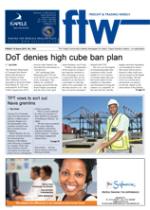There is a mixed report
card for the South African
auto industry.
According to the latest
Industry Policy Action
Plan (IPAP) released by
the Department of Trade
and Industry in February
this year, in 2008 the
auto sector contributed
R18-billion, or 1.6% of the
total “manufacturing valueadded”
in the economy.
Despite some successes
in exports, the industry had
a negative trade balance of
R29.7-billion.
Way more vehicles and
components are shipped
into the country than
exported – which leaves the
freight industry with piles
of empty containers that
have to be moved around
the world before they can be
filled again.
Where the auto industry
does add significant value,
however, is in employment –
over 131 000 jobs, or 5.9% of
all manufacturing jobs in
the country.
It also contributed around
4.9% to GDP in 2007, and
attracts billions of rands in
foreign investment a year.
The government wants to
see exports grow in order
to reduce the sector's trade
deficit and to preserve jobs.
It is a big challenge – South
Africa's total production of
over half a million vehicles in
a good year (or under 1% of
global production) can easily
be taken up in an increasingly
competitive global auto
market, which has a surplus
of over 25 million new
vehicles a year, depending on
which estimate you use.
Long-term sustainability
will come from production of
over a million new vehicles
a year by 2020, which is
almost as big a challenge
for the logistics industry as
for the motor manufacturers
themselves.
Government is encouraging
the growth of the components
industry. Proposals for shared
production facilities of
common components are on
the table.
Here, one of the challenges
is logistics. All the original
equipment manufacturers
(OEMs) will want their
suppliers as close as possible
in order to reduce logistics
costs and allow for just-insequence
supply.
There is, however, one
strong argument that can be
used in this centralisation of
common components, such as
alternators, filters, batteries,
and the like.
And that is that the
shipping world is already
delivering these parts from
around the world to OEM
plants just in time. The
distance from Port Elizabeth
to Rosslyn is a whole lot
shorter than that from Sao
Paolo to Rosslyn.
Shared facilities for component production proposed
19 Mar 2010 - by Ed Richardson
0 Comments
FTW - 19 Mar 10

19 Mar 2010
19 Mar 2010
19 Mar 2010
19 Mar 2010
19 Mar 2010
19 Mar 2010
19 Mar 2010
19 Mar 2010
19 Mar 2010
19 Mar 2010
19 Mar 2010
19 Mar 2010
Border Beat
Poll
Featured Jobs
New
New
New
